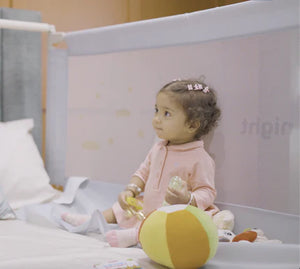The Impact of Baby Proofing on Child Development: How a Safe Environment Boosts Exploration and Learning
Sep 18, 2024
When it comes to early childhood development, parents often focus on educational toys, stimulating activities, and interactive games. However, one aspect that’s just as crucial but often overlooked is creating a safe environment for babies to freely explore and learn. Baby proofing not only prevents accidents but also plays a vital role in shaping your child’s curiosity, independence, and cognitive development.
Let’s dive into how baby proofing positively impacts a child’s development and why providing a secure environment fosters better learning experiences.
1. Encouraging Safe Exploration
Babies are naturally curious. The moment they start crawling or walking, they begin exploring their surroundings to make sense of the world around them. In an unsafe environment, this curiosity can be stifled by the constant need for parental intervention to prevent accidents. Baby proofing minimizes risks, such as sharp edges, uncovered electrical outlets, or unstable furniture, allowing your child to freely explore within boundaries.
This freedom is essential for motor skill development, as babies learn to balance, crawl, and eventually walk without the fear of injury. It also encourages cognitive growth as they begin to engage with their environment in safe and meaningful ways.
2. Promoting Independence and Confidence
When babies feel secure in their surroundings, they become more confident in their movements and actions. A child who is allowed to explore without constant interruptions builds self-reliance. Baby proofing provides a sense of security, not just for parents but for the baby too. They start to understand that the space they are in is safe, and this promotes independent play.
This independence nurtures decision-making skills as babies explore textures, objects, and spaces at their own pace, leading to enhanced problem-solving abilities and creative thinking.
3. Fostering Cognitive Development
A safe environment enables babies to interact with their surroundings through sensory experiences—touching, tasting, and manipulating different objects. Baby proofing facilitates this by removing harmful items while leaving developmentally appropriate ones within reach. Through these interactions, babies develop hand-eye coordination, fine motor skills, and spatial awareness.
Moreover, being able to explore in a safe, unrestricted manner helps babies engage in cause-and-effect learning. They begin to understand the relationship between their actions and the outcomes, which is a key cognitive milestone.


